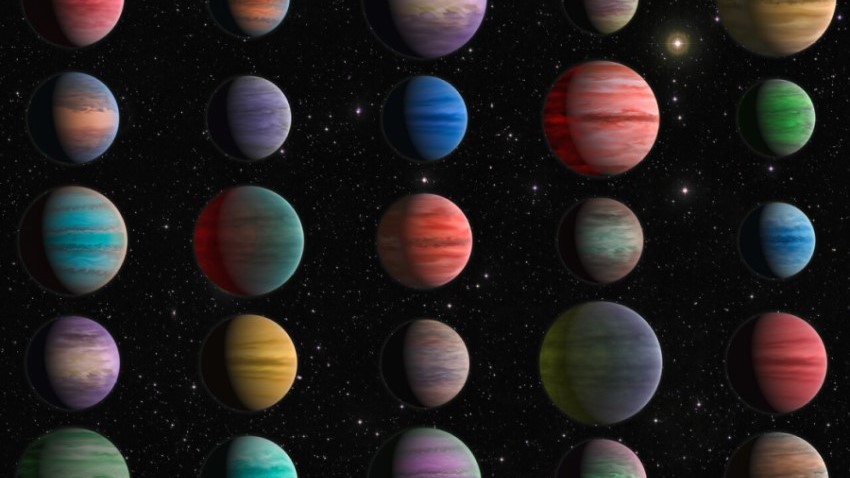
What would be the best way for an advanced alien civilisation to make its presence known across the galaxy? It might be to make the planets in its star system dance in mathematical sequence.
Their idea is that a sufficiently advanced civilisation could alter the orbits of planets in its solar system to act as a beacon of its existence to an outside observer.
Direct Imaging And Spectroscopy Of Extrasolar Planets - Astrobiology
Demographics of planetary-mass companions detected with various methods. Bold symbols denote the 175 companions with spectroscopic measurements constraining planet atmospheres: directly imaged companions comprise a substantial fraction of this population.
Direct imaging and spectroscopy is the likely means by which we will someday identify, confirm, and characterize an Earth-like planet around a nearby Sun-like star.
NASA-Funded Sounding Rockets To Probe Nearby Stars' Habitable Zones

Sounding rocket technology based on captured World War II-era, German V-2 missiles is not only still relevant 75 years later but is now on the cutting edge of astrobiology and exoplanetary exploration.
The aim is an ongoing sounding rocket campaign to determine if spectral type F, G and K stars —- the ones most like our own Sun —- would be so active even in full maturity that they would strip any planets they might harbor in their inner solar system of their atmospheres on time periods of a few ...
The Ariel Target List: The Impact of TESS and the Potential for Characterising Multiple Planets ...
Sky locations of potential Ariel Tier 1 targets. Top panel: currently-known planets, second panel: Tier 1 targets from the predicted targets of B18, third panel: Tier 1 targets from the predicted targets of B20, bottom: potential Tier 1 targets from the current TPCs.
By providing homogeneous datasets, with a high SNR and wide wavelength coverage, Ariel will unveil the atmospheric demographics of these far-away worlds, helping to constrain planet formation and evolution processes on a galactic scale.
We've Now Seen Planet-Forming Disks Around Hundreds of Young Stars. What Do They Tell Us?

Is our Solar System comparable to other solar systems? What do other systems look like? We know from exoplanet studies that many other systems have hot Jupiters, massive gas giants that orbit extremely close to their stars. Is that normal, and our Solar System is the outlier?
A catalogue of exoplanets using NASA telescopes

An exoplanet is a planet outside of our Solar System. While the first possible exoplanet observation was recorded in 1917, the existence of exoplanets was not confirmed until 1992.
Using decades of data from two telescopes, the Hubble and the Spitzer, an international team of astronomers have begun to catalogue different types of exoplanets, identifying 25 " hot Jupiters " and publishing their findings in the Astrophysical Journal Supplement Series .
China's telescope array in Antarctica starts search for Earth-like planets
A Chinese telescope array mounted in Antarctica has started operation to observe exoplanets or Earth-like planets. (Photo/Chinese Academy of Sciences)
The facility, consisting of four optical telescopes and a near-infrared one, has been installed at China's Zhongshan Station during the country's 38th Antarctic scientific expedition.
Behold, the Black Hole at the Center of Our Galaxy - The Atlantic

For the first time in human history, you don't have to imagine it. Using telescopes powerful enough to stretch our perception across unfathomable distances, astronomers have made a cosmic postcard: the first-ever picture of the supermassive black hole at the center of the Milky Way.
We love trees 🥰🍀💕❤️💋😘
#NFT #ETH #nftgiveaways #nftcommunity #Giveaways #NFTPromotion #ART
https://opensea.io/collection/aotam
Hot NFT tree art collection available. This is BIG!
See the amazing artwork. Click here.


No comments:
Post a Comment